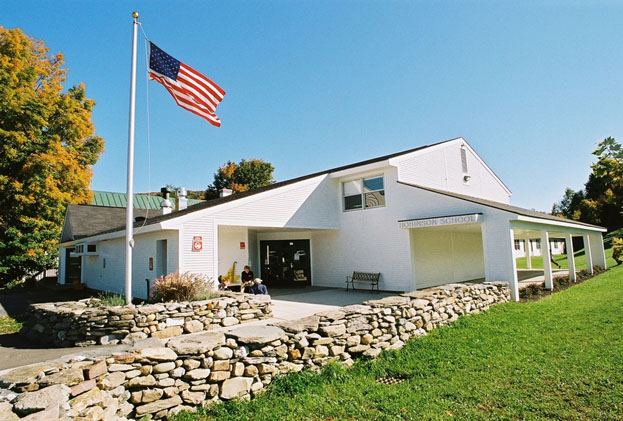
The Whole Child Framework – Part IV: Engagement
By
In this article, we discuss how schools can be designed to foster engagement in the world – in their school community, local community and regional and world contexts.

By
In this article, we discuss how schools can be designed to foster engagement in the world – in their school community, local community and regional and world contexts.

By
Architects take many approaches to making successful buildings. Some architects design based on an abstract idea, others see their work more as sculpture or art. Our goal is create environments with a sense of place that engages its users. What does this mean? We believe buildings should be of their time and place, leveraging the […]

By
In this article, we look at different organizational models for building design and their ability to adapt to changing needs. As schools evolved from the one room schoolhouse to the graded school, a prototype evolved that includes a front administration area with a gym, cafeteria and/or multipurpose space. Attached to this are classroom wings, which […]

By
Digital Crayon Article 2 – The Planning Process In this article, we discuss the steps to consider when embarking on a major facility project. For many educational institutions, major projects evolve from their strategic plan, which provides the broad objectives and rationale for the initiative. This is […]

By
For a few years now, we have been giving a presentation entitled “Design for the Whole Child”, which describes our view of the goal of school design. The thesis is this: the mission of schools has expanded to address the needs of the whole child: academic, social, emotional and physical. When we design schools, we […]

By
posted by David Epstein, AIA, LEED AP In our last article, we discussed the sustainability in a general way as viewed through the lens of the LEED Green Building Rating System. I am sure many of you are wondering: how do I green my existing facility. Here again, looking at LEED’s Existing Building: Operations + Maintenance […]

By
In light of recent tragic events, I thought it would be timely to discuss safety and security at schools. It is always a difficult discussion. In many of our local schools, there is a feeling that the community is safe and something bad couldn’t happen here. The shooting in Essex, Vermont in 2006 certainly shifted […]

By
posted by David Epstein, AIA, LEED AP Sustainability, Green Schools, Environmental Design – it goes by many names these days. Everybody wants it for their schools, but few schools understand what it means and the level of commitment required to make it happen. We believe sustainable design is a great fit for schools because it […]

By
posted by David Epstein, AIA, LEED AP In our last conversation, we looked at the Learning Commons (aka Library) and started discussing technology. This is a subject worth spending a little more time on. While schools we work with are all increasingly integrating technology into the learning experience, they are all at different parts of […]

By
Our last article was about growth and community. Another big issue with virtually all schools we work with is on-site traffic congestion and safety. Everybody is driving their kids to schools these days. This results in backups and delays, both on and off the school grounds. Because of this, people park everywhere and kids cross […]

By
First let’s talk about some of big drivers behind a facility project. Ideally, these are defined in a strategic plan, but that is not always the case. Having a strategic plan as starting point gives the school leadership team a clear mandate for pursuing its primary facility goals. Often, however, needs emerge from the […]

By
Last article we discussed getting started on a facility project. In this article, let’s discuss how the master planning process might work. If it is an existing building or campus, we generally divide up the process into three components: Facility Analysis, Programming and Concept Design. If it’s a totally new project, then of course the […]